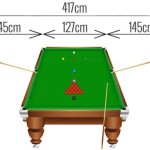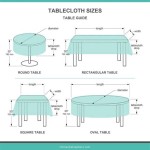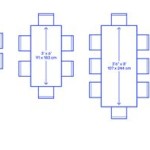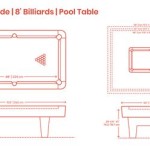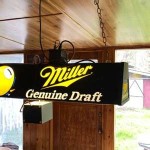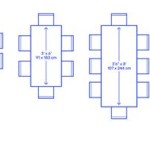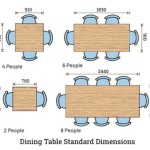Wood Nesting Tables Pottery Barn: A Comprehensive Guide
Nesting tables, in their various forms, have long been a fixture in homes, offering a practical and aesthetically pleasing solution for adaptable surfaces. Pottery Barn, a well-known retailer of home furnishings, offers a range of wood nesting tables designed to cater to diverse interior styles and functional needs. This article aims to provide a comprehensive overview of Pottery Barn's wood nesting tables, exploring their defining characteristics, materials, styles, and factors to consider when purchasing.
Understanding the Appeal of Nesting Tables
Nesting tables, as their name suggests, are a set of tables of varying sizes that can be stored one inside the other. This design offers several key advantages. Firstly, they provide flexible surface space. When needed, the tables can be pulled out to accommodate additional guests, serve as temporary workstations, or display decorative items. When not in use, they can be nested together, minimizing their footprint and freeing up floor space. This makes them particularly suitable for smaller living spaces or for rooms where adaptability is paramount.
Secondly, nesting tables contribute to the overall aesthetic of a room. Pottery Barn’s designs, in particular, often incorporate stylish details and finishes that enhance the visual appeal of the space. From rustic farmhouse styles to sleek modern designs, nesting tables can complement a wide range of interior design schemes.
Thirdly, nesting tables offer a practical advantage for home organization. By providing additional surfaces for storage or display, they can help to keep clutter at bay. This makes them a valuable addition to living rooms, bedrooms, or even home offices.
Key Features of Pottery Barn's Wood Nesting Tables
Pottery Barn’s wood nesting tables stand out for several reasons, primarily related to their material selection, design aesthetics, and construction quality. The retailer typically uses a variety of woods, including solid hardwoods like mango wood, acacia, and oak, as well as engineered woods like MDF (Medium-Density Fiberboard) with wood veneers. The choice of wood influences the table's durability, appearance, and price point.
Solid wood nesting tables generally offer superior durability and a richer, more natural aesthetic. The inherent grain patterns and variations in color contribute to a unique and timeless look. However, solid wood can be more susceptible to changes in humidity, potentially leading to warping or cracking over time. Engineered woods, on the other hand, are more stable and resistant to these environmental factors, making them a practical choice for certain climates. Wood veneers, applied over an MDF core, can provide the appearance of solid wood at a lower cost.
The finishes applied to the wood also play a significant role in the table's appearance and durability. Pottery Barn often utilizes finishes such as staining, painting, and sealing. Staining enhances the natural beauty of the wood grain, while painting provides a more uniform and contemporary look. Sealants protect the wood from moisture and scratches, ensuring long-lasting beauty.
In terms of design, Pottery Barn’s nesting tables encompass a wide range of styles, catering to diverse tastes. From traditional designs with turned legs and intricate detailing to modern designs with clean lines and minimalist silhouettes, there is likely a set of nesting tables to suit any aesthetic preference.
Beyond the aesthetic appeal, Pottery Barn also emphasizes construction quality. The tables are generally constructed with sturdy joinery techniques, such as mortise-and-tenon joints or dowel joints, to ensure stability and longevity. The attention to detail in the craftsmanship contributes to the overall value and durability of the product.
Exploring Different Styles and Materials
Pottery Barn offers a diverse range of wood nesting tables, each with its unique style and material composition. Understanding these variations is crucial for selecting the right set for a specific home. Some popular styles include:
Farmhouse Style: These tables often feature distressed finishes, rustic hardware, and traditional silhouettes. They typically incorporate solid woods like reclaimed pine or mango wood, adding a touch of warmth and character to the space.
Modern Style: Modern nesting tables are characterized by clean lines, geometric shapes, and minimalist detailing. They often utilize materials like engineered wood with sleek black or metallic finishes, creating a contemporary and sophisticated look.
Transitional Style: Transitional nesting tables bridge the gap between traditional and modern styles. They often feature a blend of classic and contemporary elements, such as turned legs paired with a streamlined tabletop. These tables can be easily integrated into a variety of interior design schemes.
Coastal Style: Coastal nesting tables evoke a relaxed and beachy vibe. They often feature light-colored woods like whitewashed oak or driftwood-inspired finishes. Rattan or woven accents may also be incorporated, adding to the coastal aesthetic.
In terms of materials, the choice depends on factors such as budget, durability requirements, and aesthetic preferences. Solid hardwoods offer superior durability and a natural aesthetic, but they can be more expensive. Engineered woods with wood veneers provide a cost-effective alternative that still offers a visually appealing look. Metal accents, such as legs or frames, can add a touch of industrial chic to the design.
Specifically, let's consider a few common wood types used in Pottery Barn's nesting tables:
* Mango Wood: Known for its sustainability, mango wood is a popular choice for eco-conscious consumers. It features a unique grain pattern and warm tones, adding character to farmhouse and rustic-style tables. * Acacia: Acacia is a durable hardwood that is resistant to scratches and dents. It features a rich, reddish-brown color and a distinctive grain pattern. * Oak: Oak is a classic hardwood that is known for its strength and durability. It features a prominent grain pattern and can be stained or painted to match a variety of interior styles. * MDF (Medium-Density Fiberboard): MDF is an engineered wood that is made from wood fibers and resin. It is stable, resistant to warping, and can be easily painted or veneered.Factors to Consider When Purchasing
When selecting a set of wood nesting tables from Pottery Barn, several factors should be carefully considered to ensure that the chosen set meets individual needs and preferences.
Size and Dimensions: Consider the size of the room where the tables will be placed and the intended use. Measure the available space and compare it to the dimensions of the nesting tables, both when nested and when fully extended. Ensure that the tables are appropriately sized for the space and that they provide adequate surface area for their intended purpose.
Style and Design: Choose a style that complements the existing interior décor. Consider the overall aesthetic of the room and select nesting tables that enhance and contribute to the desired ambiance. Take into account the color palette, furniture styles, and architectural details of the space.
Material and Durability: Evaluate the material composition and construction quality of the nesting tables. Consider the durability requirements based on the intended use and frequency of use. If the tables will be used frequently and exposed to potential scratches or spills, opt for a durable hardwood or a high-quality engineered wood with a protective finish.
Functionality: Consider the intended functionality of the nesting tables. Determine whether they will be primarily used for serving, display, or as temporary workstations. Choose a set that provides adequate surface area and features to accommodate the intended use. For example, if the tables will be used for serving drinks or snacks, consider a set with raised edges or a spill-resistant finish.
Budget: Set a budget and explore options within that range. Pottery Barn offers a range of wood nesting tables at varying price points. Compare the features and benefits of different sets within the budget to determine the best value for the money.
Storage: Evaluate how often you anticipate using all tables included. Some nesting tables are designed in such a way that, when nested, there is limited table top space on the largest (exposed) table. If you only need the occasional extra table, this may not be a concern, but if you envision using the large table frequently, but the smaller tables only sometimes, you will want to consider how well the nested tables will function in normal use.
Finish Options: Consider the finish on the wood and how well it stands up to heavy use or cleaning. Some finishes can be easily marred or stained. Read customer reviews to gain insights into the real-world durability of the finishes on different Pottery Barn nesting table sets.
Assembly Requirements: Determine whether assembly is required and assess your ability to assemble the tables. If assembly is required, consider the complexity of the assembly process and whether any specialized tools are needed. If you are not comfortable assembling furniture, consider purchasing a set that is pre-assembled or opting for professional assembly services. Pottery Barn frequently offers assembly options for an additional fee.
Customer Reviews: Read customer reviews to gain insights into the real-world performance of the nesting tables. Pay attention to reviews that address issues such as durability, stability, and ease of use. Consider both positive and negative reviews to get a balanced perspective.
By carefully considering these factors, consumers can make an informed decision and select a set of wood nesting tables from Pottery Barn that perfectly complements their home décor and meets their functional needs.

Newton Nesting Tables Pottery Barn

Woven Nesting Side Tables Pottery Barn

Nesting Table End Side Tables Pottery Barn

Nesting Coffee Tables Accent Pottery Barn

Tanner Rectangular Nesting End Table Pottery Barn

Parquet Square Reclaimed Wood End Table Pottery Barn

Tanner Rectangular Nesting End Table Pottery Barn

Folsom Round Nesting Coffee Table Pottery Barn

Benchwright Round End Table Pottery Barn

Daily Find Pottery Barn Malcolm Round Nesting Coffee Tables Copycatchic


